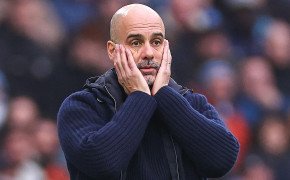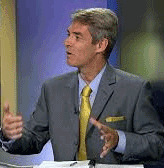The three Europa League triumphs Sevilla achieved between 2014 and 2016 are now very much part of their past. This February, much like last season, they are back in the continent’s bigger competition as they enter the Champions League knockout stage with a tie against English opposition. This time last year they faced Leicester and failed to turn a dominant first-leg performance into a decisive result. A late Jamie Vardy goal meant the game ended in a 2-1 win, and in a bitty second leg they missed a crucial penalty en route to losing 2-0 to go out. Kings of European knockout football no more.
Sevilla were heavily favoured to go through 12 months ago by oddsmakers and pundits alike, but as they prepare to meet Jose Mourinho’s Manchester United this time around, they’re the outsiders. However, at least in Wednesday’s first leg, they shouldn’t be underestimated. This season, Sevilla have a 13-5-1 record at home and it’s been their results away from the Ramón Sánchez Pizjuán that have stymied their domestic progress.
Plenty has changed in the last year for Sevilla. Jorge Sampaoli cut short his tenure to answer the call of his homeland and the Argentina job to be replaced by countryman Eduardo Berizzo. Moving from Celta Vigo, Berizzo broadly replicated his long-term results with his new club, which in itself wasn’t enough and a poor run of form meant he was sacked a shade under seven months into the job and, cruelly, under a month after a cancer diagnosis. His replacement was intriguing: the Italian Vincenzo Montella, who’s on something of a retrieval mission after the promise of his time at Fiorentina was followed by a disappointing stint at Milan.
Montella has shown flexibility in previous roles and an ability to work with a large and multinational squad, so he looked like a potentially good fit. Despite a series of jobs, he’s far from a journeyman. His career could still progress in a positive direction, and this first job outside his native Italy looks like it could marry the ambitions of both manager and club effectively.
Despite already having been on the wrong end of two five-goal hidings in his short tenure – at home to Real Betis and more surprisingly away at Eibar – Montella has otherwise carved out a fairly solid return with an 8-2-3 record. There are clear signs of light early on. For example, across 37 matches this season, Atletico Madrid have only conceded two or more goals on four occasions, and two of them were against Sevilla in both legs of their Copa del Rey tie.
The club have also seen the need to adapt to a post-Monchi world, and two transfer windows have now passed since their feted recruiter moved on. It’s hard to deconstruct their subsequent transfer strategy entirely, but they have continued to make gambles on players who have had mixed fortunes elsewhere.
Win cash prizes for free with our competition!
| User |
Total tips |
Profit | 1 | Yield | Expected prize |
|
|
5
|
918840 | 2 |
+116.52%
|
500 EUR |
 Abbe
Abbe
|
2
|
858000 | 3 |
+115.86%
|
250 EUR |
|
|
5
|
619750 | 4 |
+119.80%
|
125 EUR |
 Gambler420
Gambler420
|
311
|
567180 | 5 |
+10.60%
|
75 EUR |
 stasibet
stasibet
|
101
|
531733 | 6 |
+67.95%
|
50 EUR |
Don't miss out - join our February Tipster Competition today
The January window allowed them to extricate Roque Mesa and Sandro Ramirez on loan from Swansea and Everton respectively; both started the crushing defeat at Eibar. Perhaps that was a case of trying to integrate new players into the side too soon and each has since returned to the bench, but it’s emblematic of how reactive Sevilla’s overall personnel strategy has been this season. They have used 28 players already in La Liga and only promising French defender Clément Lenglet has started more than 17 of the 24 games they’ve played.
The summer saw the return of Jesús Navas, but at 32-years-old his best years are behind him and, with one assist and zero goals in around 1400 minutes, his traditional lack of end product has continued. Nolito and Éver Banega also arrived, but they too are on the wrong side of the age curve. The nomadic Simon Kjaer was plucked from Turkey. Johannes Geis landed from Schalke, Luis Muriel from Sampdoria. With Ganso still on the books from last season, there has been an odd echo of a bunch of scouting reports from 2012.
Sevilla have also struggled to find an adequate replacement for Kevin Gameiro, the striker who departed for Atletico Madrid two summers ago. Montella hasn’t yet decided whether Wissam Ben Yedder or Muriel provides the best focal point for his formation, but the former will feel he has earned a start against United thanks to his six goals in the group phase. Perhaps Sevilla’s biggest threat is Pablo Sarabia; five goals and three assists in eight games shows he’s benefited from his new boss’ backing.
Matching up against United, it also seems fairly likely that the two teams will butt heads with similar formations. Mourinho appears to have abandoned his occasional back three experiments, while Montella has largely kept the formation he inherited. Both sides have the option of bouncing between a 4-3-3 and a 4-2-3-1, at least nominally and depending on personnel, but in such a pivotal game for both teams surprises would seem unlikely.
United’s recent form has been fairly erratic and their last two Premier League away games have seen zero goals and two defeats by Tottenham and Newcastle. Even in beating Huddersfield in the FA Cup with a 2-0 win, the Red Devils were unconvincing and only recorded five shots all game. In truth, neither side can approach this fixture with maximum confidence, but Sevilla – so strong at home but less so on their travels – will need to take a first-leg lead if they’re to have a realistic chance of progression. It’s certainly not beyond them.















